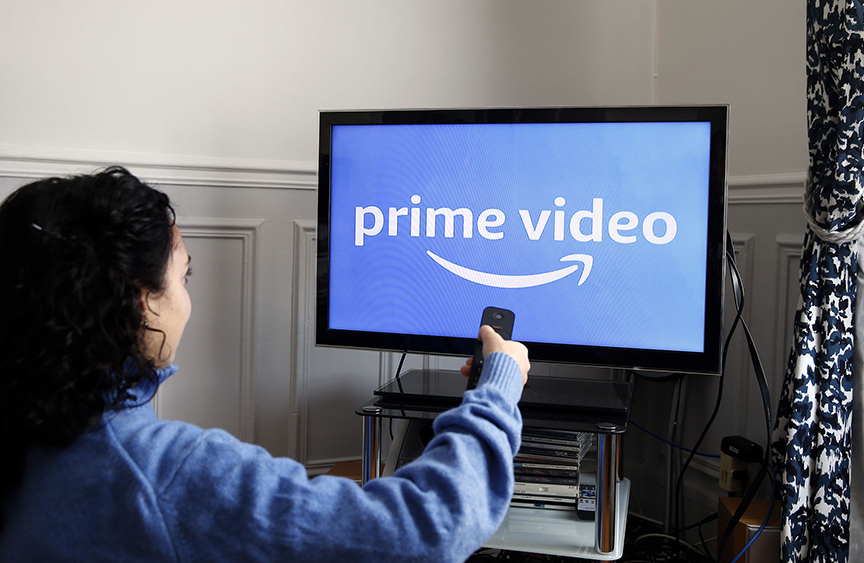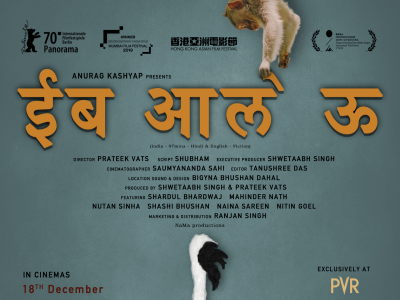With a host of films skipping the theatrical run and going for a digital release, the Indian film industry faces a new set of challenges amid the pandemic
FIRST DAY, FIRST SHOW. You are all excited for it, as always. Probably, you have been waiting for this film for a long time – since the day it’s trailer appeared. What next? You’ll go to your nearest theatre, buy a ticket, grab some popcorn and coke, and then you are all set for the cinematic experience – with a companion in the next seat and a hall full of strangers, while the big screen in front of you transports you to another world.

But what if your ‘first day, first show’ looks like this instead: you go to your room, sit on your couch and login to a streaming platform and start the film. And without the ‘larger than life’ experience, you get to see a newly-released film. This, in fact, is the reality amid the global pandemic. The Indian film industry is witnessing a trend of digital release, and this has created quite a stir among the film fraternity.
Streaming soon
Netizens were shocked when they saw the announcement that Shoojit Sircar’s much-talked about film Gulabo Sitabo would be released on the popular streaming platform Amazon Prime (on June 12). The premiere was widely publicised on various social media platforms – from Instagram to Twitter. Starring Amitabh Bachchan and Ayushmann Khurrana, the film is a comedy satire.
Thereafter, many film producers came out with their decisions – of having a digital release, skipping the theatrical run. Vidya Balan starrer Shakuntala Devi is one such film which soon declared the same. Balan herself took to Twitter to announce that her film is heading for a premiere on Amazon Prime. Ghoomketu starring Nawazuddin Siddiqui and Anurag Kashyap among others, also had a digital premiere on Zee5 on May 22.
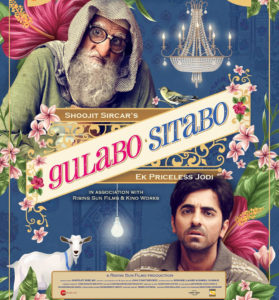
And soon, reports (no confirmation received yet) started doing the rounds that a host of films will take the same road. These are: Laxmi Bomb (starring Akshay Kumar and Kiara Advani; releasing on Disney+Hotstar),Jhund (starring Amitabh Bachchan; releasing on Netflix), Ludo (multistarrer; releasing on Netflix), Gunjan Saxena (starring Jhanvi Kapoor; releasing on Netflix), Indu ki Jawaani (starring Kiara Advani; platform not decided), Khaali Peeli (starring Ananya Panday and Ishaan Khattar; releasing on Netflix), Mimi (starring Kriti Sanon; releasing on Netflix), Shiddat (starring Radhika Madan; platform not decided).

Apart from these above-mention Hindi releases, some regional films — like Jyotika starrer Ponmagal Vandhal(Tamil), Keerthy Suresh starrer Penguin (Tamil and Telugu), Sufiyum Sujatayum (Malayalam) starring Aditi Rao Hydari, Law (Kannada) starring Ragini Chandran and Siri Prahlad, and Danish Sait’s next film French Biryani(Kannada) — are also set to follow the same route.
War of words
This digital premiere trend came as a shock to many – and more so to the film exhibitors. They have openly criticised the producers (without naming) who decided to skip the theatrical run, and go for an OTT release instead.
Kamal Gianchandani, CEO of PVR Pictures, said in an interaction with PTI: “Needless to say, we are disappointed with some of our producers deciding to go straight to streaming platform/s.” He also said that the exhibitors have asked producers to “hold back their film’s release till cinemas reopened”, and added that “we won’t be playing a film which is already released on a streaming platform.”
Inox strongly expressed its disappointment. It stated: “Such acts, though isolated, vitiate the atmosphere of mutual partnership and paint these content producers as fair-weather friends rather than all-weather life-long partners.” It further added that they would now be “constrained to examine its options, and reserves all rights, including taking retributive measures, in dealing with such fair-weather friends.”
Reacting to such strong remarks from multiplexes, the Producers Guild of India thereafter came out with their statement as well. It said that it is disappointing to see abrasive and unconstructive messaging from some of their colleagues in the exhibition sector. It also added that when it comes to financial losses, the situation of the producers is no different from exhibitors, as the insurers have refused to bear the cost of elaborate sets that had to be taken down as shoots remain cancelled.
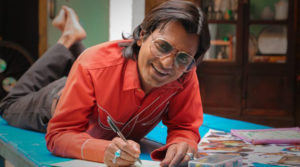
The Guild also mentioned that cinemas may be one of the last sectors of the service likely to be given permission to re-open and even if theatres in India start functioning, there is no guarantee that the overseas theatrical market, which is a key component of the economics of Hindi films will resume.
Need of the hour
On the other hand, filmmaker Shoojit Sircar’s response to this wasn’t a controversial one. He simply said in response to a media query, “I thought that since the film is ready — and I don’t know when cinemas will open — it was a very apt decision. Digital is going to be co-existing with cinema. It is already the future.”
Film trade analyst Atul Mohan elaborates: “This whole thing should be seen as demand of the time. Theatres have been closed since over two months now and still there is no clarity when the cinemas are going to revive their business in India. No one knows how long it will take, and how the acceptance will come from the audience – as in will they go to theatres to watch movies, or the fear will still be there? People from the film fraternity are assuming that it might take 4-5 months to get things back to normal.”
Echoing the same sentiment, film trade analyst Girish Johar says, “I completely feel it is a very short-term phenomenon. It is difficult to sustain in these tough times. So the producers who have invested money and whose films are almost ready, have all the right to do whatever they have to do to sustain themselves. And only if they get money, then only they can go on producing more films.”
He further added that these producers (who are releasing films digitally) are under stress – be it financial or emotional – as these are tough times. “So if they are trying to do these things, certainly they are not too happy about it and are probably doing it just to make both ends meet.”
Mohan feels that for the time being everybody should understand the situation and realise that one can’t be selfish right now. But then he also adds, “If they can’t hold it — as in films which are made by borrowing money and at a good interest – then of course they don’t want their investment to be stuck for a long time.”
“Films like Gulabo Sitabo could have done good business in theatres. So its digital release is a bit unfortunate, and disappointing. But then I understand that there are some filmmakers who have their financial compulsions as well. But the only thing I hoped for is that before deciding to sell off these films to OTT, it would have been nice if the producers communicated with the exhibition fraternity to see if something can be done,” says film exhibitor and distributor Akshaye Rathi.
Money matters
Confusion prevails among many – as to how a film that was made on a budget of some crores can skip the theatrical run. How will the producers make up for the money spent on the making of the film?
“All the films which are going for the digital release are mid-range – as in films which are made at a budget of around Rs 15, 20 or 30 crore. These are the films which are ready, and aren’t able to get a theatrical release. So, they are the ones which can be made easily available to the subscribers. And the OTT platforms don’t mind paying more – as they can afford to! And these producers, if they can even make 15-20% of the profit, they don’t mind because the future is uncertain. So, these films – suppose they make 20-25 crore after theatrical release, whereas the OTT platforms can shell out Rs 35 or 40 crore to buy that film – then also it is a good deal for these producers,” explains Mohan.
He further elaborates that for big-budget films, the OTT platforms will have to shell out more money. “For instance, if the digital platforms have to acquire big budget films, or that of Shah Rukh Khan, Aamir Khan, Akshay Kumar or Hrithik Roshan – then they pay around Rs 55-60 crore. Because these films do a business of more than Rs 100 crore, so the producers want to have that kind of revenue coming in if they are skipping the theatrical release. If the producers expect to add box office also, then these films would come at a price of around 150 crore – which the platforms won’t be able to afford. Because no matter how rich you are, you have your own limitations to spend the money,” he says.
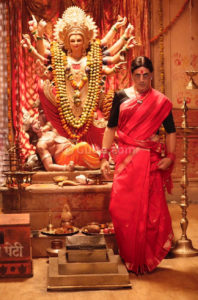
Not for sale
Yash Raj Films (YRF), one of the oldest and most reputed production houses of the country, has taken a different stand when it comes to a digital release. One of their sources had said, “Like other banners, YRF too has been approached by various digital platforms to buy the rights of their upcoming films. However, they don’t feel it is fair for their films, made for big screen experience, to be consumed by viewers on their cell phones or laptops. Also, they care for the exhibition sector which has suffered arguably the maximum due to the lockdown. YRF team, including Aditya Chopra, don’t want to add to their woes.”
Rathi supports this stance. “There are a few producers – whom I consider visionaries – because they are looking at the well-being of the entire ecosystem, and are standing behind the exhibition sector like a rock. Like Yash Raj has said that, not only for bigger films like Jayeshbhai Jordaar, even for smaller films like Sandeep aur Pinky Farar, they are waiting for theatrical release.
Similarly, Reliance made a statement that for 83 and Sooryavanshi, and even for The Girl on the Train and for some Tamil films in its kitty – they will wait for theatres to open. The same goes with the makers of Coolie No. 1 and Radhe. So we have these people to thank, and trust me when I say this, when these films come to cinemas – I can assure you the entire exhibition sector will rally behind these films and make sure that they producers get rave returns,” he says.
Challenging times
“Cinemas faced the storm when the VCRs, DVDs – all these came in, and satellite business started to come in. So one thing is for sure: that the theatrical expereince will never go away – forget India, it is a worldwide thing! It’s a solid pillar of our fraternity. And India makes a thousand films a year, so if some 20-25 films are even releasing on OTT platforms –then that won’t change the dynamic much in the long run,” Johar says with firm conviction.
He also believes that when a producer makes a film, he – and those attached to the film – want the film to have a reach as wide as possible. And, according to him, theatrical release has a deep penetrative quality – not only in our minds, but in our hearts as well.
“Also, when released on OTT platforms, they lose the validation. No one gets to know if the film is a hit or a flop. And no one from the film fraternity wants to do away with that validation,” Johar concludes.
Way ahead
With cinema halls in India shut for about two months now, the film industry is already running in huge losses. And amidst all this, this new trend of digital release has posed some serious questions regarding the future of cinema.
Many members of the film fraternity are also contemplating whether this will affect the relationship between the producers and exhibitors in the long run. According to Rathi, it won’t affect their relationship.
“This is the kind of fight that husbands and wives have. They are two sides of a coin, and very honestly it’s not going to take more than a couple of days for all of us exhibitors and producers to laugh at the way we took stances against each other. And they’ll probably be like ‘let bygones be bygones, let’s start afresh and help each other,’” he believes.
“I really hope that positive, forward looking and well intentioned, constructive communication starts happening – at the level of the entire fraternity, rather than individual companies or entities. They all just need to talk it out and find solutions,” concludes Rathi.

